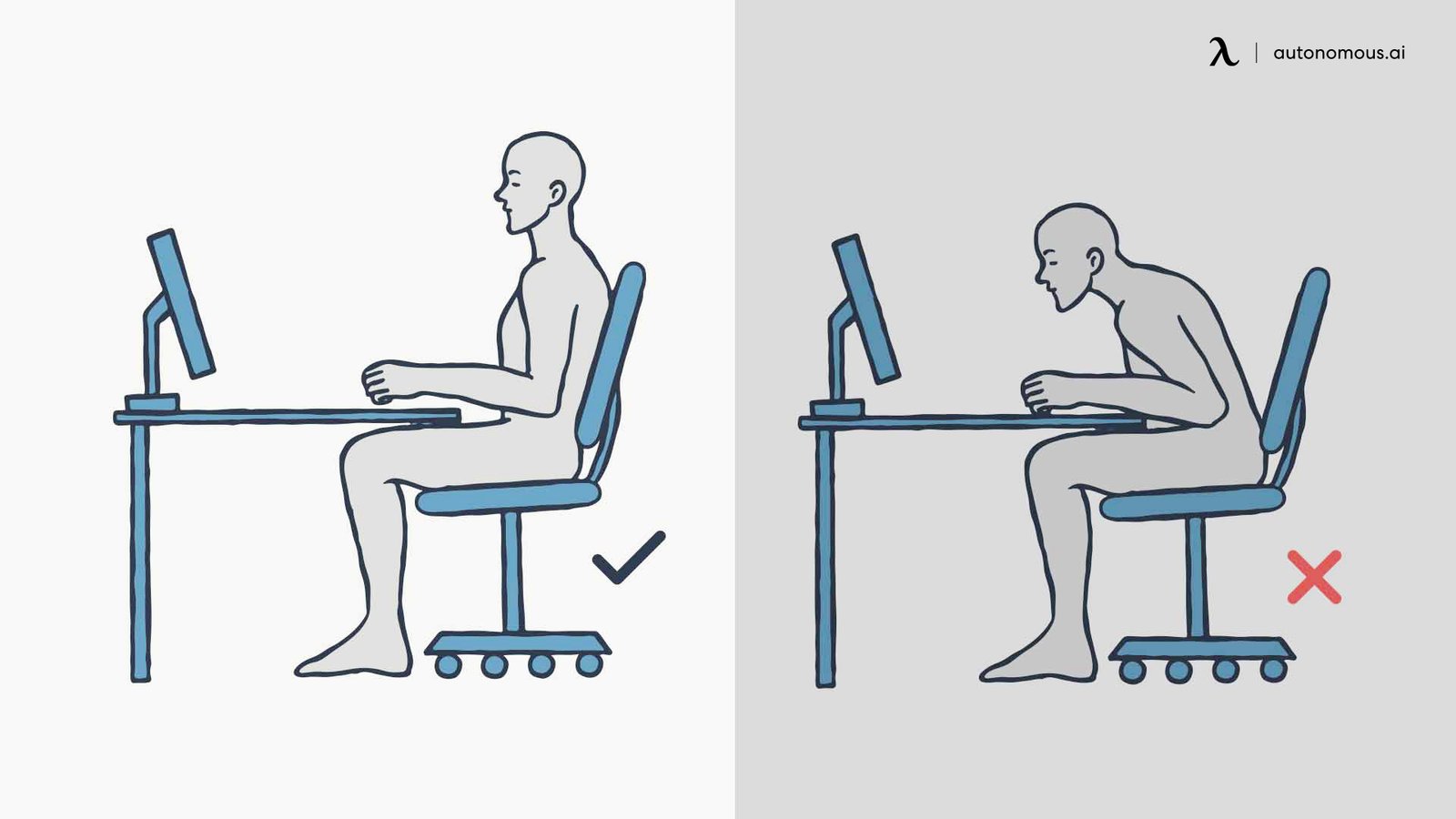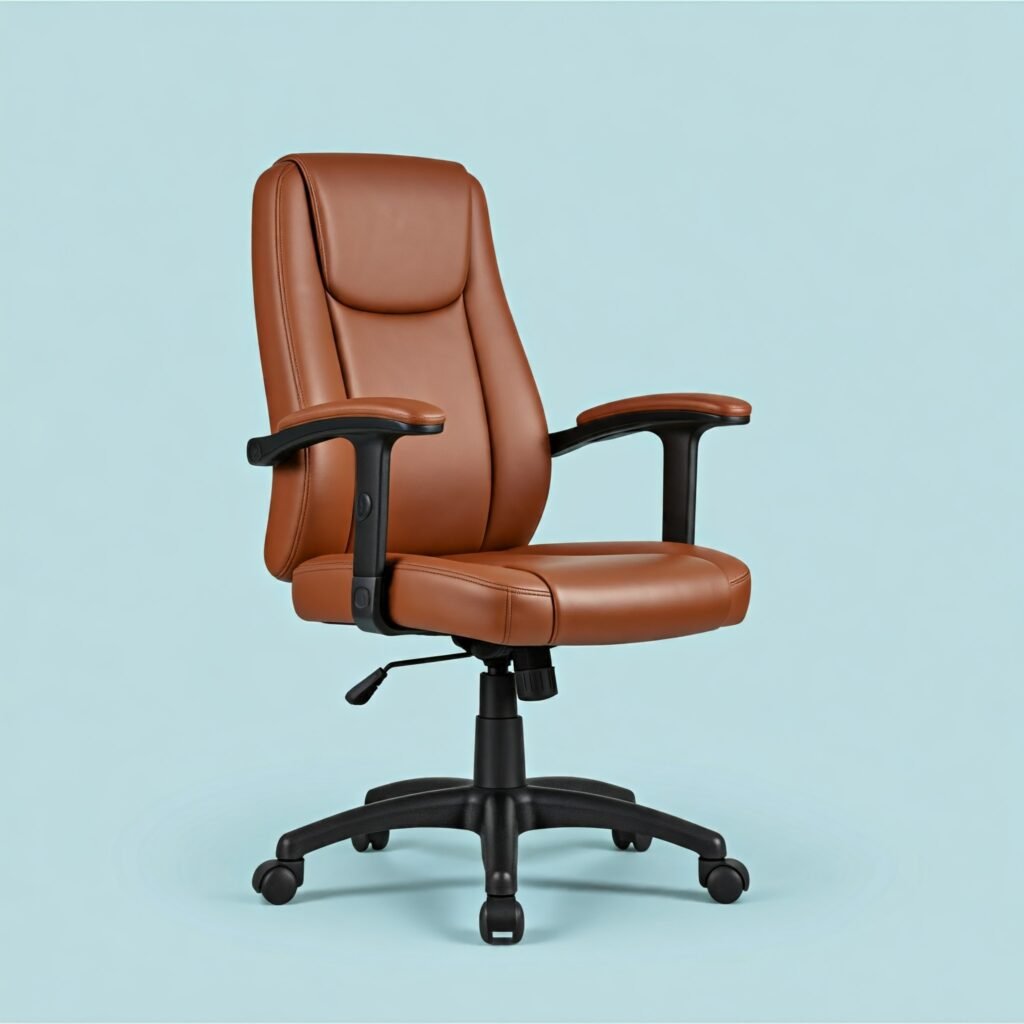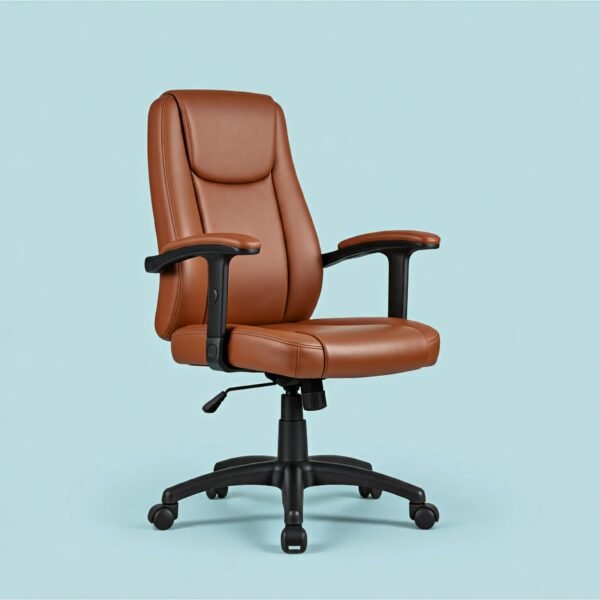Ergonomics in study chairs is a critical factor in academic and professional environments. The design of a study chair significantly impacts physical well-being, cognitive performance, and overall productivity. This article examines the importance of study chair ergonomics, their effects, and the science behind their design.
Ergonomics in Seating
Ergonomics is the practice of designing and arranging objects to optimize human interaction with them. For study chairs, this means creating seating that supports natural posture and movements, reducing physical strain during long periods of sitting.

The concept of ergonomic seating has developed over recent decades, driven by advancements in understanding human anatomy, biomechanics, and the effects of prolonged sitting. Modern ergonomic chairs are the result of extensive research, combining insights from orthopedics, industrial design, and cognitive psychology.
Consequences of Poor Seating Ergonomics
Inadequate seating leads to more than just discomfort. Long-term use of poorly designed chairs can cause various health issues, many of which may not be immediately apparent.
Musculoskeletal disorders (MSDs) are common consequences, affecting muscles, tendons, ligaments, nerves, and blood vessels. Chronic back pain, often linked to poor posture, is prevalent among students and office workers. Chairs that don’t support the spine’s natural S-shaped curve force it into unnatural positions, increasing pressure on spinal discs and surrounding muscles. This can lead to chronic pain, reduced mobility, and potential long-term spinal changes.
Neck and shoulder strain are also common outcomes of poor ergonomics. Lack of proper upper body support often results in hunching or craning the neck, stressing the cervical spine and upper back muscles. This can cause headaches, limited range of motion, and in severe cases, conditions like cervical spondylosis.
Poor circulation is another effect of inadequate seating. Chairs that put too much pressure on the back of the thighs can impede blood flow to the lower legs and feet, causing discomfort and potentially increasing the risk of deep vein thrombosis in those who sit for extended periods.
These physical issues directly affect cognitive function. Discomfort and pain are significant distractions that impair concentration, memory retention, and overall cognitive performance. This translates to decreased productivity and potentially lower academic or career achievement.
Key Features of Ergonomic Study Chairs
Study chair ergonomics incorporate several essential features:
- Adjustable seat height allows users to sit with feet flat on the floor and thighs parallel to the ground, crucial for proper posture and weight distribution.
- Lumbar support maintains the spine’s natural curve, reducing stress on the lower back. Advanced chairs often have adjustable lumbar support for personalized comfort.
- Appropriate seat depth and width impact comfort and support. The seat should be deep enough to support the thighs without forcing users to slouch forward to reach the backrest.
- Armrests, when properly designed, reduce strain on the neck and shoulders. They should be adjustable in height and ideally in width and angle.
- Swivel base and reclining backrest allow for easy movement and position changes, reducing static muscle load and promoting better circulation.

Urban Ladder ErgoStudy Pro: The ultimate study chair for students
The Urban Ladder ErgoStudy Pro is the ultimate ergonomic study chair for students, offering premium leather comfort, fully adjustable features, and superior back support to enhance focus and productivity during long study sessions.
Back Support and Pain Reduction in Ergonomic Study Chairs
Study chair ergonomics play a crucial role in improving back support and reducing back pain, a common issue for students and professionals who spend long hours seated. These chairs are designed to address the root causes of back pain associated with prolonged sitting.
The primary way ergonomic chairs support the back is through their design that promotes proper spinal alignment. The human spine has a natural S-shaped curve, and ergonomic chairs are built to maintain this curve even during extended periods of sitting. This is achieved through several key features:
Lumbar support is the most critical element for back pain reduction. It fills the gap between the lower back and the chair, supporting the natural inward curve of the lower spine. This prevents slouching and reduces the strain on the lower back muscles and spinal discs. Many ergonomic chairs offer adjustable lumbar support, allowing users to position it precisely where needed for their body shape and size.
The backrest of an ergonomic chair is typically full-length, supporting the entire spine from the pelvis to the upper back. This comprehensive support distributes the body’s weight more evenly, reducing pressure points and muscle fatigue. The slight recline of the backrest, typically between 100 to 110 degrees, has been shown to minimize the pressure on spinal discs.
Seat depth and angle also contribute to back support. A properly adjusted seat depth ensures that the user can sit with their back against the backrest while leaving a small gap between the back of the knees and the seat edge. This position supports the thighs and promotes good posture. A slight forward tilt of the seat can help maintain the natural curve of the lower back and reduce the tendency to slouch.
The ability to make dynamic adjustments is another key factor in back pain reduction. Ergonomic chairs often allow for movement, such as rocking or reclining. This dynamic sitting encourages small position changes throughout the day, promoting blood flow and reducing static muscle load. Some advanced chairs even incorporate mechanisms that promote active sitting, engaging core muscles and improving overall back strength.
By addressing these aspects of seating, study chair ergonomics can significantly reduce the incidence and severity of back pain. Users often report decreased muscle tension, reduced discomfort, and improved ability to maintain focus over long study or work sessions. However, it’s important to note that while an ergonomic chair is a powerful tool for back health, it should be used in conjunction with proper posture habits and regular breaks for movement and stretching.
Scientific Basis for Ergonomic Benefits
The benefits of ergonomic chairs are grounded in scientific principles. Improved posture ensures efficient use of the spine and supporting muscles, reducing unnecessary strain and fatigue over long periods.
Research shows a strong link between physical comfort and cognitive function. Physical discomfort can significantly impair working memory, attention span, and problem-solving abilities. By reducing physical distractions, ergonomic chairs create an environment more conducive to sustained focus and cognitive performance.
Prevention of health issues is a significant long-term benefit of ergonomic seating. While the human body can adapt to poor posture in the short term, prolonged exposure to ergonomic stressors can lead to lasting physical changes. Proper support from the outset helps prevent the development of chronic conditions that can be difficult and costly to treat once established.
Ergonomics in the Broader Study Environment
An ergonomic chair is part of a larger ergonomic setup. The chair must work with other elements of the study environment for maximum benefit. Desk height should complement the chair’s adjustability to maintain proper arm and wrist positions. The positioning of computer screens, keyboards, and other frequently used items should minimize repetitive reaching or awkward postures.
Lighting is also crucial. Poor lighting can cause eye strain and encourage poor posture as users lean in to see their work. Natural light is ideal, but when unavailable, proper artificial lighting that reduces glare and provides adequate illumination is essential.
Regular movement is important even with ergonomic seating. The best chair cannot fully compensate for the negative effects of prolonged static postures. Regular breaks to stand, stretch, and move around are necessary for maintaining circulation, reducing muscle fatigue, and promoting overall well-being.
The Value of Ergonomic Investments
Choosing a study chair is a decision with significant implications for health, productivity, and long-term well-being. Understanding ergonomic principles and investing in a chair that embodies these principles creates a foundation for sustained academic and career success.
As research on the human body and the effects of prolonged sitting continues, ergonomic chair design will evolve. Staying informed about these developments and investing in quality seating is a crucial aspect of self-care and professional development in increasingly sedentary work and study environments.
The importance of ergonomics in study chairs is clear. It’s an investment in comfort, health, and productivity that yields long-term benefits. As cognitive demands increase, ensuring that physical environments support and enhance cognitive efforts becomes essential for optimal performance and well-being.
Ready to transform your study space?
The Urban Ladder ErgoStudy Pro combines cutting-edge ergonomic design with student-focused features to support your academic journey. Experience the difference proper posture can make – explore the ErgoStudy Pro today and give yourself the foundation for academic excellence.



